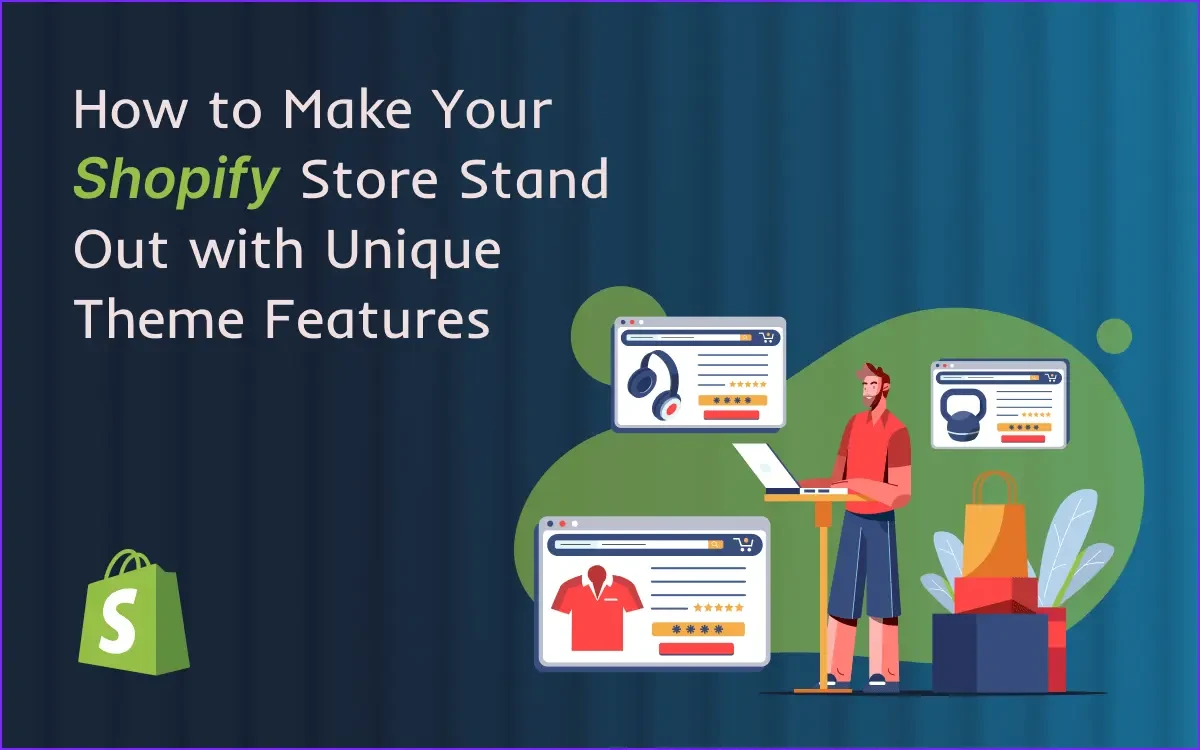Your Shopify store needs to shine. Every day, thousands of new stores launch. How do you make yours special?
The answer is simple: unique Shopify theme features.
Think of your store like a house. Everyone has walls and doors. But what makes people stop and stare? The unique touches. The special details that scream "this is different."
Why Generic Themes Kill Your Sales
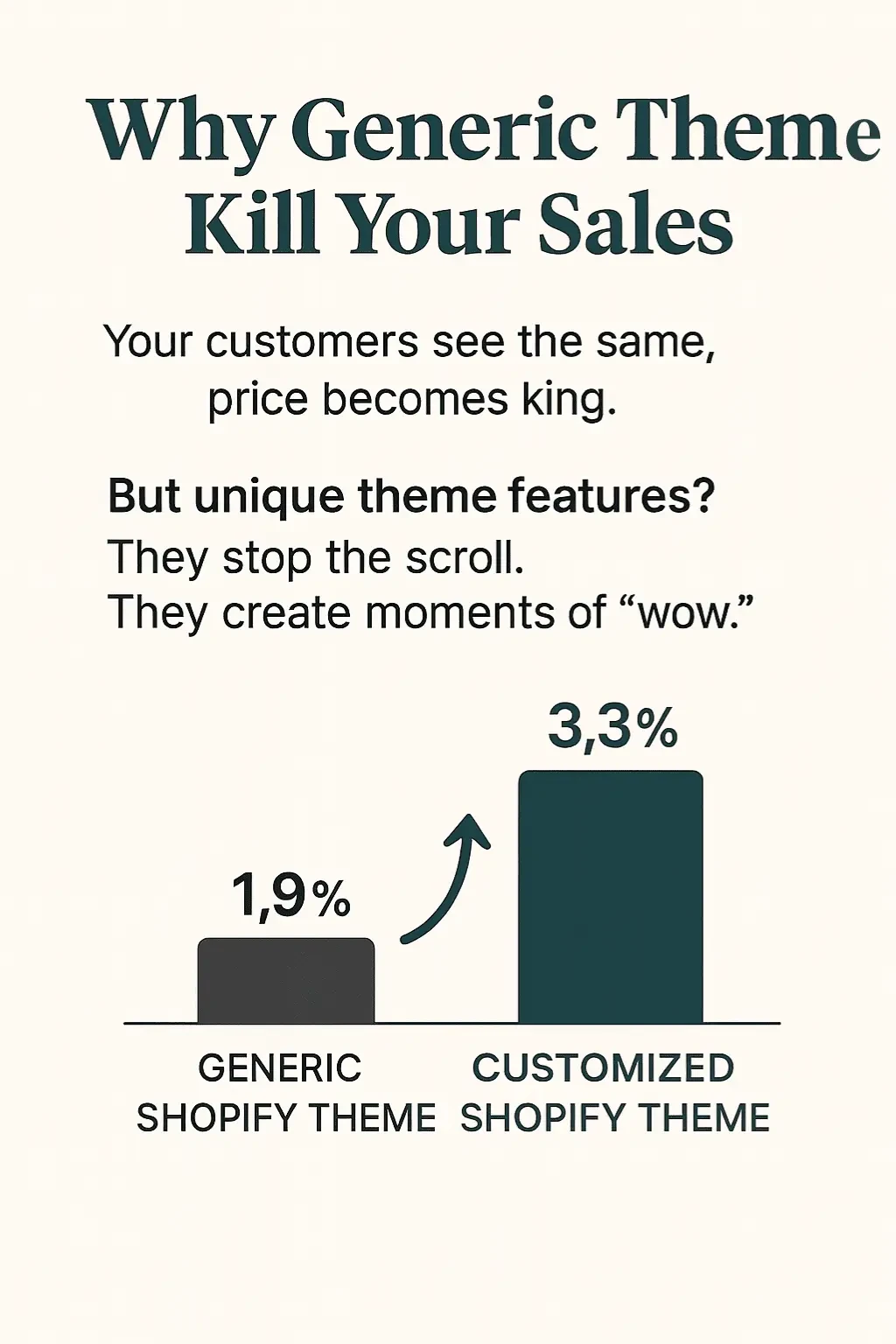
Most store owners pick a theme. They change the logo. Maybe switch some colors. Then they wonder why sales stay flat.
Here's the truth: your customers see the same theme everywhere.
When everything looks the same, price becomes king. You don't want to compete on price alone. You want to compete on experience.
Generic themes create generic results. Your store blends into the background noise. Customers scroll past without a second look.
But unique theme features? They stop the scroll. They create moments of "wow." They build trust and desire.
What Makes Shopify Theme Features Truly Unique?
Not all features are created equal. Some add real value. Others just add clutter.
Real unique features solve problems. They make shopping easier. They build confidence. They create emotion.
Here are the types that actually work:
Interactive Elements That Engage
Static pages are boring. Movement catches eyes. Interactive features keep visitors engaged longer.
Think hover effects on product images. Click-to-reveal details. Smooth animations between sections.
These small touches feel premium. They signal quality before customers even see your products.
Personalization That Feels Personal
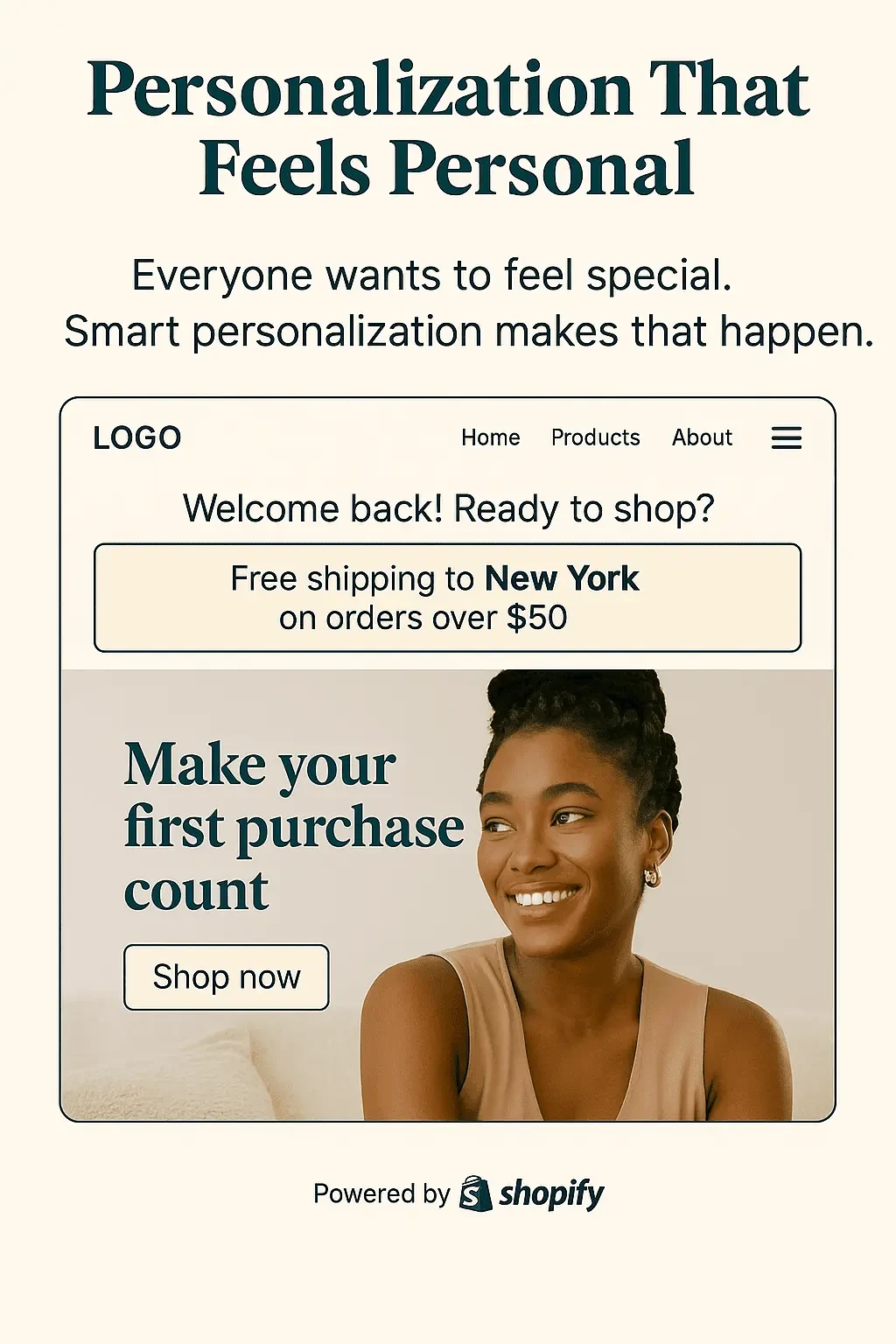
Everyone wants to feel special. Smart personalization makes that happen.
Recent visitors see "Welcome back!" messages. First-time visitors get different greetings. Location-based content shows relevant information.
This isn't about complex AI. It's about simple, thoughtful touches that show you care.
Social Proof That Actually Proves
Reviews are common. But how you show them matters.
Real-time purchase notifications create urgency. Photo reviews build trust faster than text. Video testimonials stop browsers cold.
The key is making social proof feel authentic. Fake reviews smell fake from miles away.
Creative Shopify Theme Ideas That Convert
Let's get specific. Here are proven creative Shopify theme ideas that turn browsers into buyers:
1. Product Story Sections
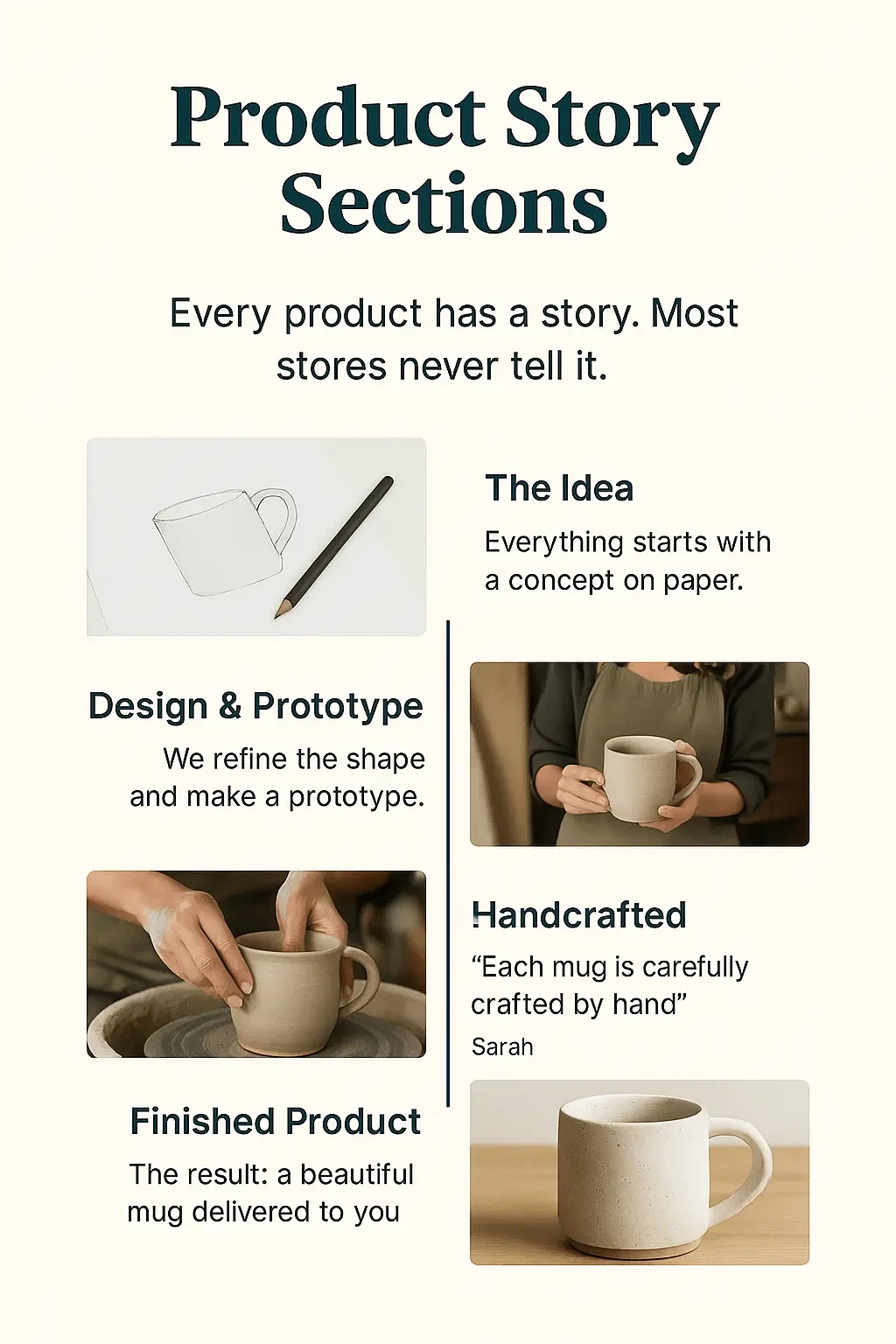
Every product has a story. Most stores never tell it.
Create dedicated sections that show your product's journey. From idea to creation to your customer's hands.
Use timeline layouts. Add behind-the-scenes photos. Include maker quotes.
This works like magic for handmade, artisanal, or locally-sourced products. Customers connect with stories, not just specifications.
2. Size and Fit Predictors
Returns kill profits. Uncertain customers abandon carts.
Smart size predictors solve both problems. They ask simple questions. Height, weight, and usual size in other brands.
Then they recommend with confidence. "We're 94% sure you need a Large."
This reduces returns by 40% in our client projects. It also increases conversions by removing doubt.
3. Bundle Builders That Feel Fun
🎮 Bundle Builder Game
Drag products to create your perfect bundle and unlock amazing savings!
🛍️ Available Products
🎁 Your Bundle
🚀 Want This for Your Store?
Transform your e-commerce experience with interactive bundle builders that increase average order value and delight customers. Our custom Shopify development team can build this exact functionality for your store.
Discuss Your Custom SolutionTailored discount tiers and gamification
Perfect experience on all devices
Fast loading and smooth interactions
Static bundles are boring. Interactive bundle builders are engaging.
Let customers drag and drop products together. Show real-time savings. Add progress bars for bigger discounts.
Make it feel like a game. "Add one more item for 25% off your entire order!"
This increases average order value while improving the shopping experience.
4. Visual Search That Actually Works
Customers see something they like. But they can't describe it.
Visual search solves this perfectly. Upload a photo. Find similar products instantly.
This is huge for fashion, home decor, and lifestyle brands. It turns "I wish I could find something like this" into immediate sales.
Stand Out Shopify Design Elements
Design isn't just pretty pictures. It's psychology in action.
The right design elements guide behavior. They create feelings. They remove friction.
Color Psychology That Sells
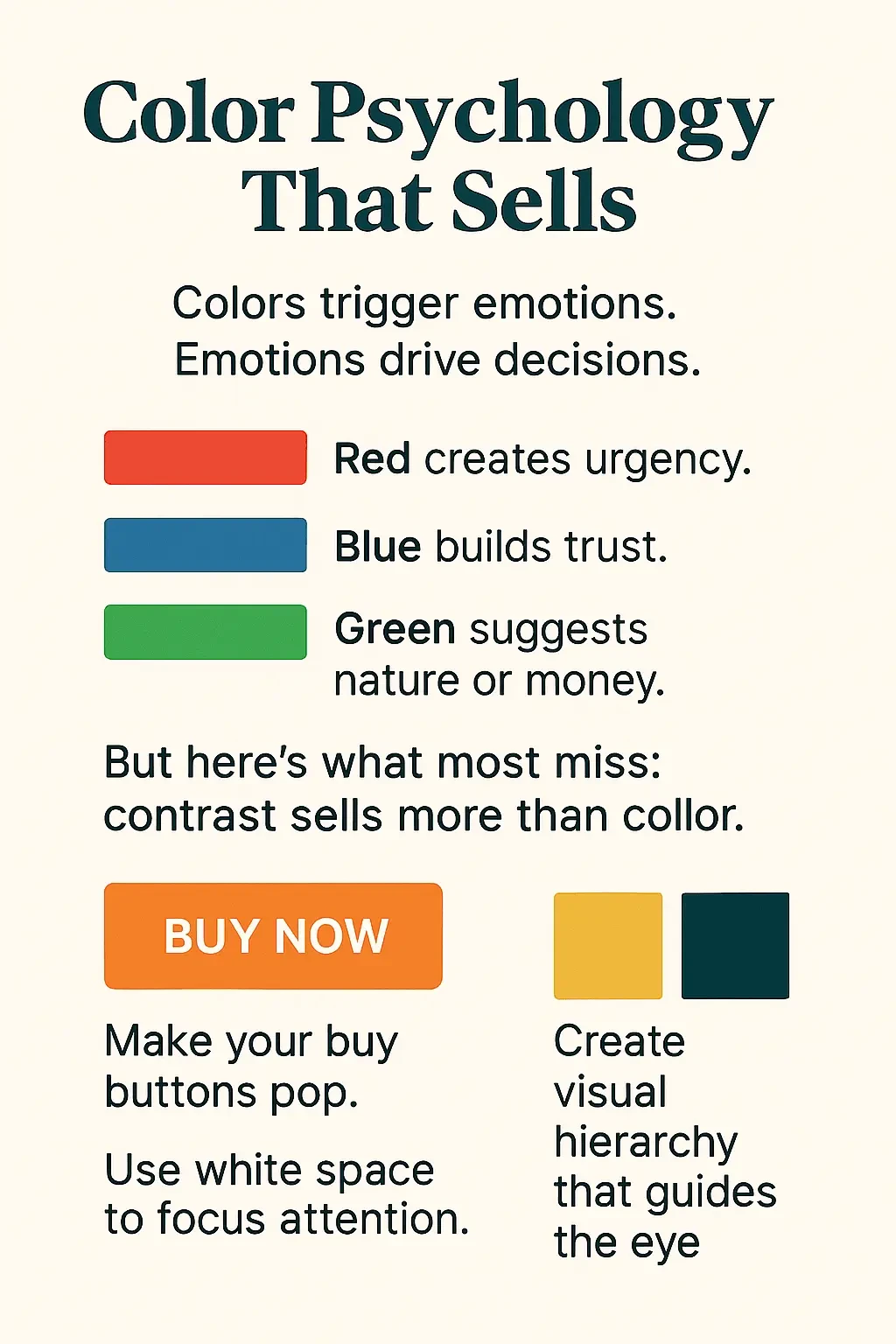
Colors trigger emotions. Emotions drive decisions.
Red creates urgency. Blue builds trust. Green suggests nature or money.
But here's what most miss: contrast sells more than color.
Make your buy buttons pop. Use white space to focus attention. Create visual hierarchy that guides the eye.
Typography That Builds Trust
Fonts have personality. Choose wisely.
Clean, simple fonts build trust. Script fonts suggest luxury or creativity. Bold fonts create impact.
But readability always wins. If customers can't read your text, they won't buy your products.
Mix font weights for hierarchy. Use plenty of white space. Make mobile reading effortless.
Layout Patterns That Convert
Most stores copy the same layout. Header, products, footer. Boring.
Try asymmetrical layouts that create visual interest. Use diagonal elements to guide eyes. Break the grid in strategic places.
But remember: different doesn't always mean better. Test everything. Measure results. Keep what works.
Shopify Store Customization That Matters
Customization for its own sake is a waste. Smart customization solves real problems.
Focus on these areas for maximum impact:
Checkout Experience Optimization

Cart abandonment hits 70% on average. Most happens at checkout.
Simplify forms. Remove surprise costs. Add trust signals everywhere.
Show security badges. Include customer service contact info. Make editing easy.
One-click upsells work here too. "Add express shipping for just $5?"
Mobile-First Micro-Interactions
Most traffic comes from mobile. But most stores optimize for desktop first.
Think thumb-friendly navigation. Easy-to-tap buttons. Smooth scrolling animations.
Small interactions matter huge. Pull-to-refresh feels natural. Swipe gestures speed up browsing.
These details separate amateur stores from professional ones.
Loading Speed Optimizations
Slow stores lose customers fast. Every second matters.
Optimize images without losing quality. Lazy load below-the-fold content. Remove unused app code.
Speed isn't just UX. Google ranks faster sites higher. More visibility means more traffic.
In our optimization projects, we've seen 2-3 second improvements increase conversions by 25-35%.
Customizable Shopify Themes vs. Built-From-Scratch
Should you customize existing themes? Or start fresh?
Both approaches work. The right choice depends on your needs.
When to Customize Existing Themes

Limited budget? Tight timeline? Customizing works great.
Choose themes with clean code. Look for regular updates. Check developer support quality.
Good themes give you solid foundation. Add your unique touches on top.
This approach gets you online faster. Costs stay reasonable. Results can still be amazing.
When to Build Custom Themes
Need something totally unique? Have specific requirements? Custom development delivers.
Custom Shopify theme development gives you complete control. Every pixel serves your brand. Every feature supports your goals.
This costs more upfront. Takes longer to launch. But results can be game-changing.
We've seen custom themes increase conversions by 2-3x compared to generic alternatives.
Shopify Design Features for Branding
Your theme should scream your brand. Not whisper it.
Consistent branding builds recognition. Recognition builds trust. Trust drives sales.
Visual Brand Integration
Colors, fonts, and images should match perfectly. Across every page. In every element.
Create brand guidelines first. Then apply them everywhere. Product photos, icons, buttons, and backgrounds.
Inconsistent branding confuses customers. Confused customers don't buy.
Voice and Tone in Copy
How you write matters as much as what you write.
Playful brands use casual language. Luxury brands stay formal. Tech brands focus on features.
Match your customer's expectations. But add your unique personality too.
This shows up in product descriptions, error messages, and email confirmations. Every word counts.
Emotional Connection Points
Facts tell. Stories sell. Emotions seal the deal.
Build emotion into your theme structure. Use hero images that inspire. Write headlines that motivate.
Show happy customers using your products. Share impact stories. Create FOMO with limited quantities.
Logic justifies purchases. Emotion triggers them.
Shopify Store Personalization Strategies
Generic experiences feel cold. Personal experiences feel warm.
Smart personalization doesn't require complex systems. Simple touches work wonders.
Behavioral Personalization
Track what visitors do. Show them more of what they like.
Viewed athletic shoes? Show more sports content. Spent time on sale pages? Highlight discounts.
This feels helpful, not creepy. Customers appreciate relevant suggestions.
Geographic Personalization
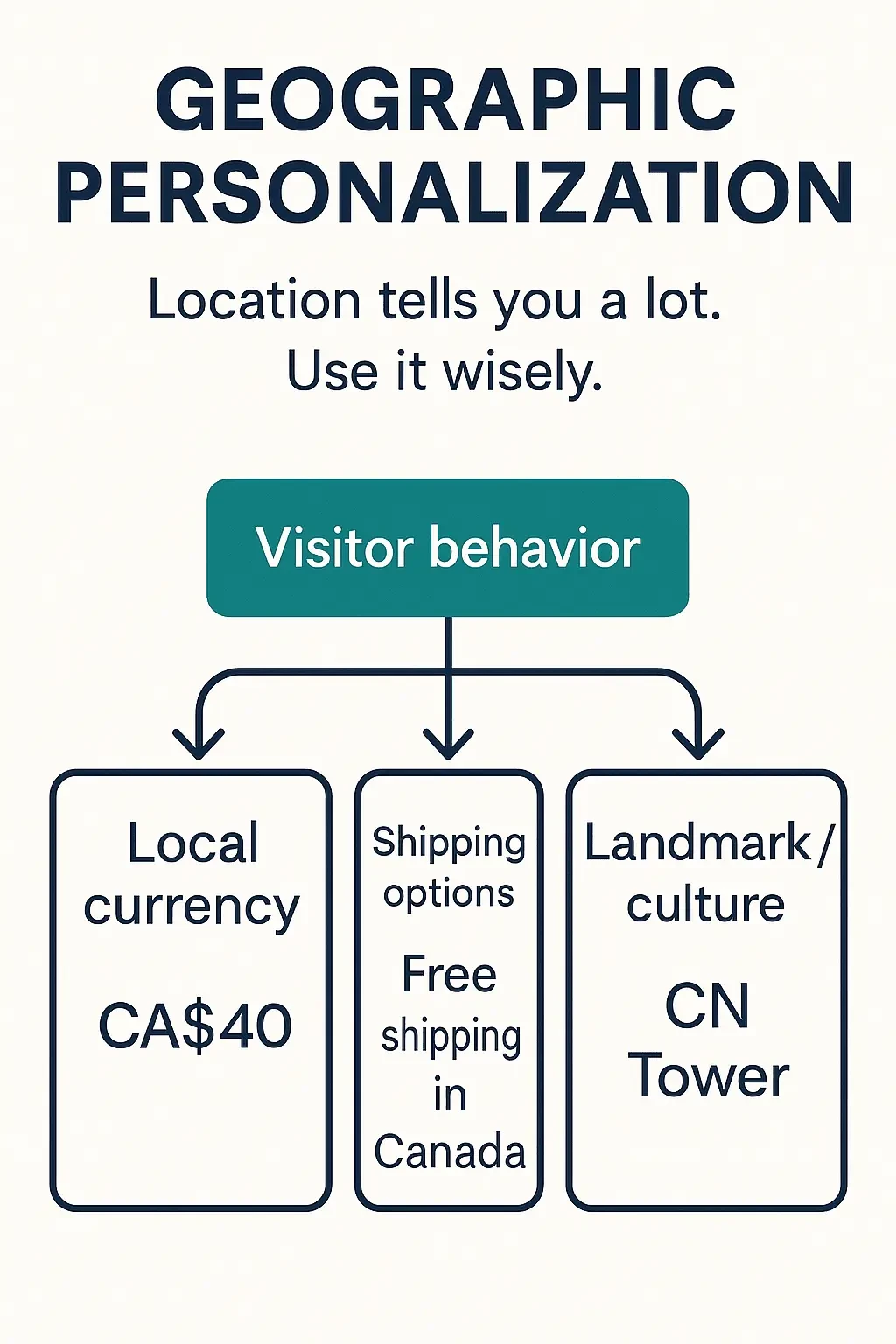
Location tells you a lot. Use it wisely.
Show local currency automatically. Display regional shipping options. Mention local landmarks or culture.
"Free shipping across Canada!" feels more personal than generic global messaging.
Purchase History Integration
Returning customers deserve VIP treatment.
Welcome them back by name. Show their order history. Suggest complementary products.
"Based on your last purchase..." recommendations convert 40% better than random suggestions.
Shopify Theme Differentiation in Competitive Markets
Standing out gets harder every day. More stores launch. Competition increases.
But differentiation opportunities grow too. New features become possible. Customer expectations evolve.
Niche-Specific Features
Generic stores try to serve everyone. Niche stores serve someone perfectly.
Pet stores need age calculators for food recommendations. Fashion stores need outfit builders. Electronics need compatibility checkers.
These specialized features can't be copied easily. They create real competitive moats.
Exclusive Content Integration
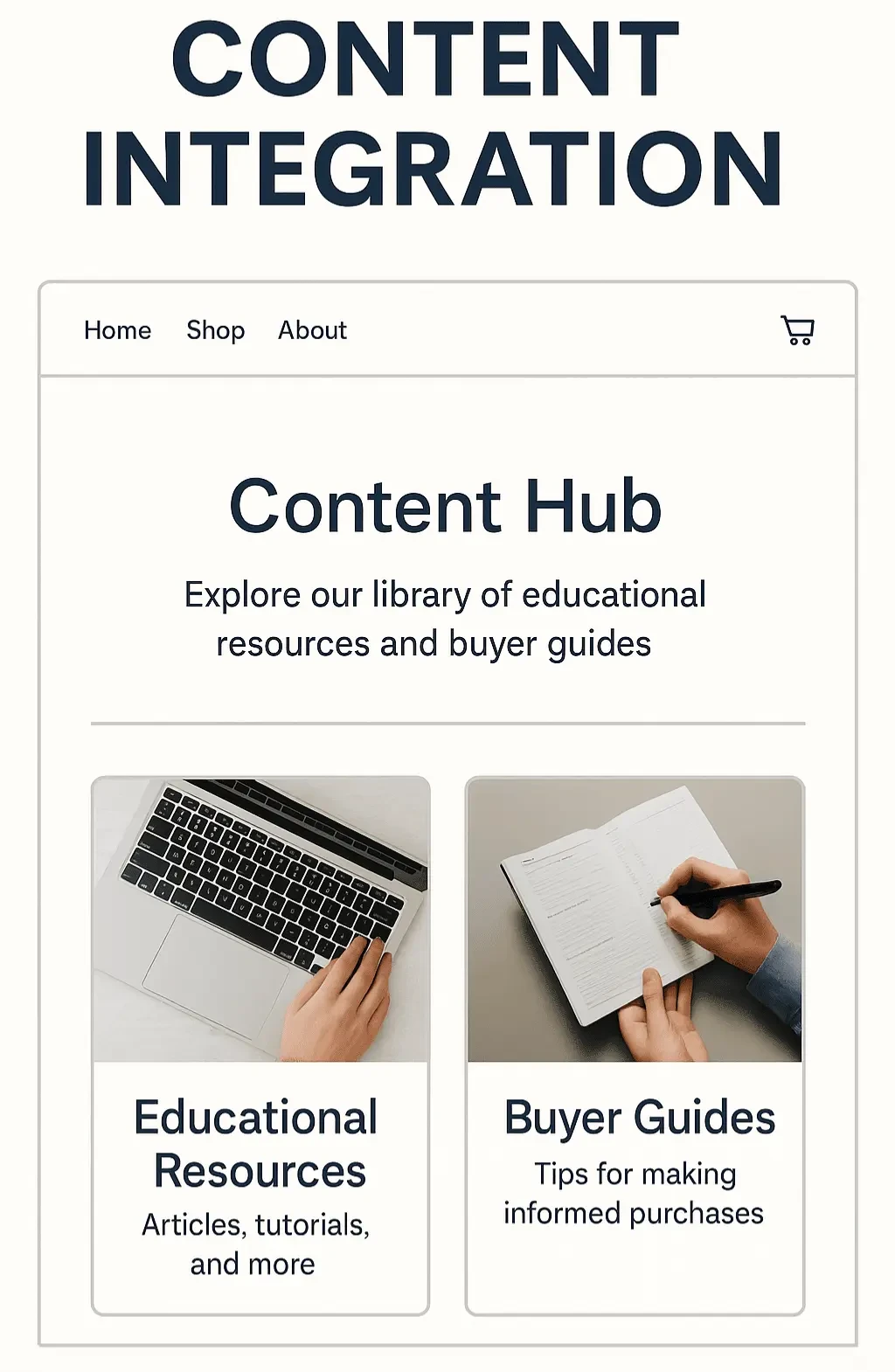
Content marketing works. But most stores just add blogs.
Think bigger. Create exclusive buyer guides. Offer members-only content. Build educational resource libraries.
Content builds authority. Authority builds trust. Trust drives higher prices and customer loyalty.
Community Building Features
Customers love brands with communities. Communities create stickiness.
Add user-generated content galleries. Create customer spotlight sections. Build review communities.
This content markets itself. Happy customers become brand ambassadors.
Unique Elements for Shopify Stores That Actually Work
Let's get tactical. Here are specific, unique elements that drive results:
Dynamic Pricing Displays
Static prices are boring. Dynamic displays create excitement.
Show savings in real-time. "You save $47!" Display bulk discounts clearly. "Buy 3, save 20%!"
Use countdown timers for flash sales. Nothing creates urgency like a ticking clock.
Advanced Product Filters
Basic filters are table stakes. Advanced filters are a competitive advantage.
Multi-select options speed up browsing. Visual filters (color swatches, style icons) improve UX.
Smart filters remember preferences. Returning customers see their preferred settings automatically.
Interactive Size Guides

Size confusion kills apparel sales. Interactive guides solve this elegantly.
Click on measurements to see comparisons. Hover over sizes to see fit photos. Ask questions to get recommendations.
This reduces returns and increases confidence. Both improve your bottom line.
Real-Time Inventory Updates
"Only 3 left!" creates urgency. But only if it's true.
Real inventory counts build trust. Fake scarcity destroys it.
Show accurate stock levels. Update them live. Create gentle urgency without being pushy.
Advanced Customization Techniques
Ready to go deeper? These advanced techniques separate pros from amateurs:
API Integrations That Add Value
Connect your store to powerful services. CRM systems, email platforms, and inventory management.
This creates seamless experiences. Customer data syncs automatically. Marketing becomes more targeted.
But integration isn't about features. It's about removing friction from customer journeys.
Progressive Web App Features
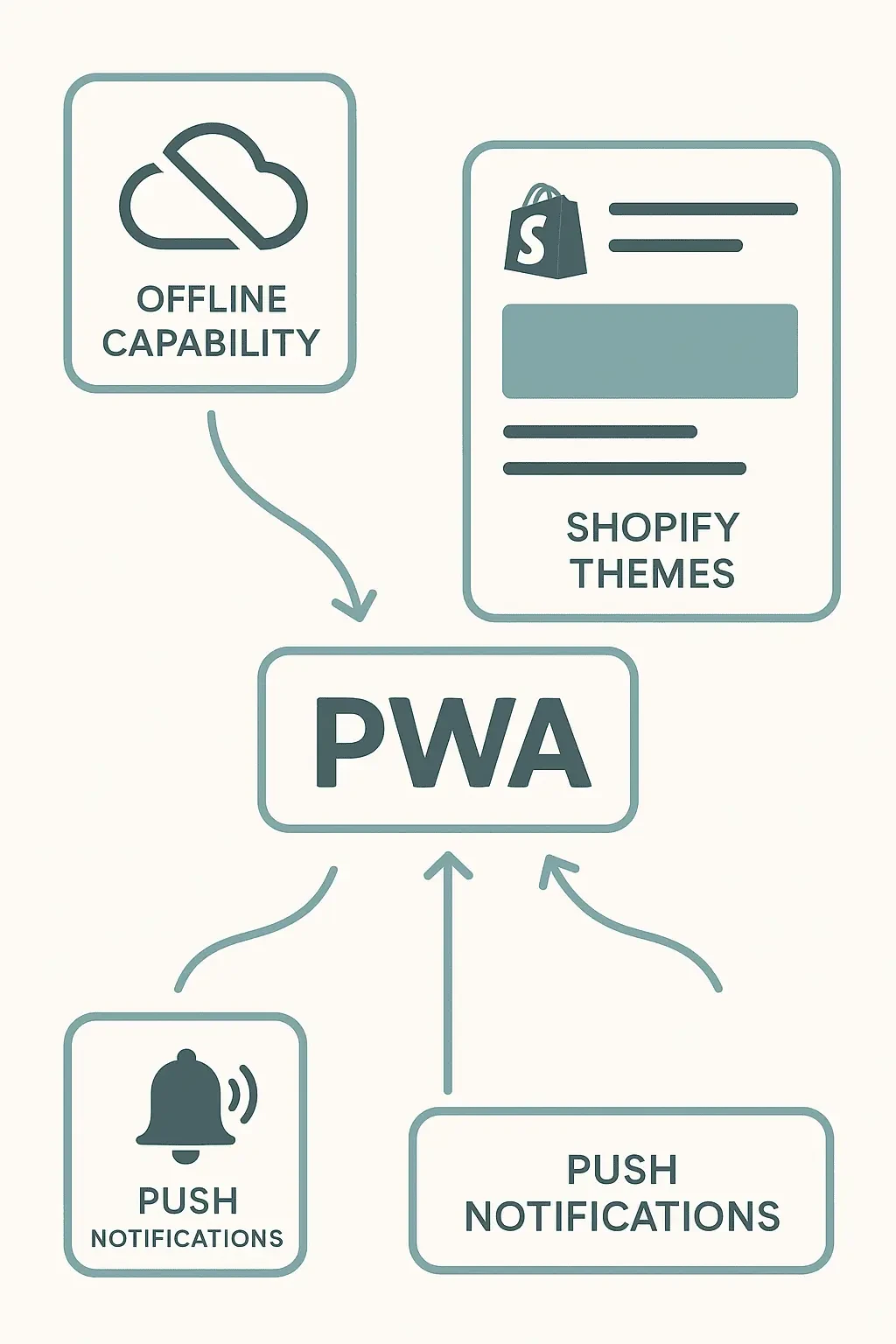
PWAs bridge web and mobile apps. They load instantly. Work offline. Send push notifications.
This creates app-like experiences without app store requirements. Customers get native-feeling performance.
PWA features can increase mobile conversions by 20-30%. The technology is proven.
Machine Learning Recommendations
Smart recommendations increase average order value. But they need smart implementation.
Track purchase patterns. Identify product relationships. Test recommendation algorithms.
"Customers who bought this also bought" only works with enough data. Start simple. Get sophisticated gradually.
Common Mistakes That Kill Unique Themes
Even great ideas can fail with poor execution. Avoid these killer mistakes:
Over-Engineering Solutions
Complexity doesn't equal quality. Simple solutions often work better.
Don't add features because you can. Add features because customers need them.
Every feature adds maintenance cost. Every option creates decision paralysis.
Ignoring Mobile Performance
Desktop customization is easy. Mobile optimization is hard.
Test every feature on real mobile devices. Different screen sizes. Various connection speeds.
Beautiful desktop themes that crawl on mobile lose 60%+ of potential customers.
Forgetting Loading Speed
Fancy features mean nothing if pages don't load.
Optimize images aggressively. Minimize code bloat. Use efficient animations only.
Speed affects everything: SEO rankings, conversion rates, and customer satisfaction.
Measuring Success of Theme Customizations
How do you know if customizations work? Data tells the story.
Key Metrics to Track
Conversion rate shows overall success. But dig deeper for insights.
Time on site indicates engagement. Pages per session show interest. Cart abandonment reveals friction points.
Bounce rate from mobile vs. desktop reveals device-specific issues.
A/B Testing Approaches
Never guess when you can test. But test smart.
Test one element at a time. Run tests long enough for statistical significance. Consider seasonal factors.
Small improvements compound. 2% here, 3% there. Soon you're at 20-30% better performance.
ROI Calculation Methods
Customization costs money. Measure the return clearly.
Track revenue per visitor before and after changes. Calculate the monetary value of conversion improvements.
Most theme customizations pay for themselves within 3-6 months if done well.
Future-Proofing Your Unique Theme
Trends change. Technology evolves. Future-proof themes adapt gracefully.
Emerging Technologies
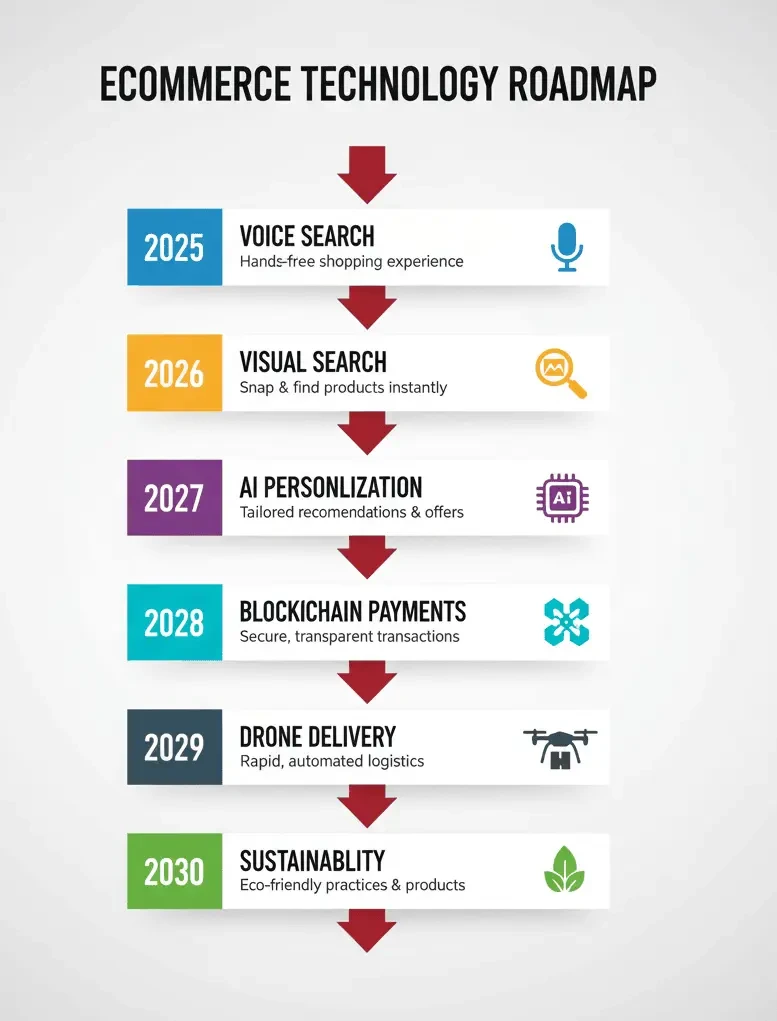
Voice search grows daily. Visual search becomes mainstream. AR try-on features spread beyond fashion.
Build themes that can integrate new technologies easily. Flexible architectures adapt faster.
Don't chase every trend. But don't ignore obvious shifts either.
Scalability Considerations
Small stores become big stores. Plan for growth from day one.
Choose themes that handle traffic spikes. Design structures that support large catalogs.
Rebuilding themes every few years costs more than building scalable ones initially.
Maintenance and Updates
Themes need ongoing care. Plan for this reality.
Budget for regular updates. Security patches matter. Feature additions keep you competitive.
Professional theme development services include ongoing support. DIY approaches often don't.
Case Studies: Stores That Nailed Uniqueness
Real examples prove concepts work. Here are stores that got it right:
Fashion Brand Transformation
A struggling fashion startup added virtual try-on features. Size prediction algorithms. User-generated content galleries.
Results? 45% conversion increase. 60% fewer returns. 3x social media engagement.
The secret wasn't one feature. It was a thoughtful integration of customer-focused solutions.
Electronics Store Innovation
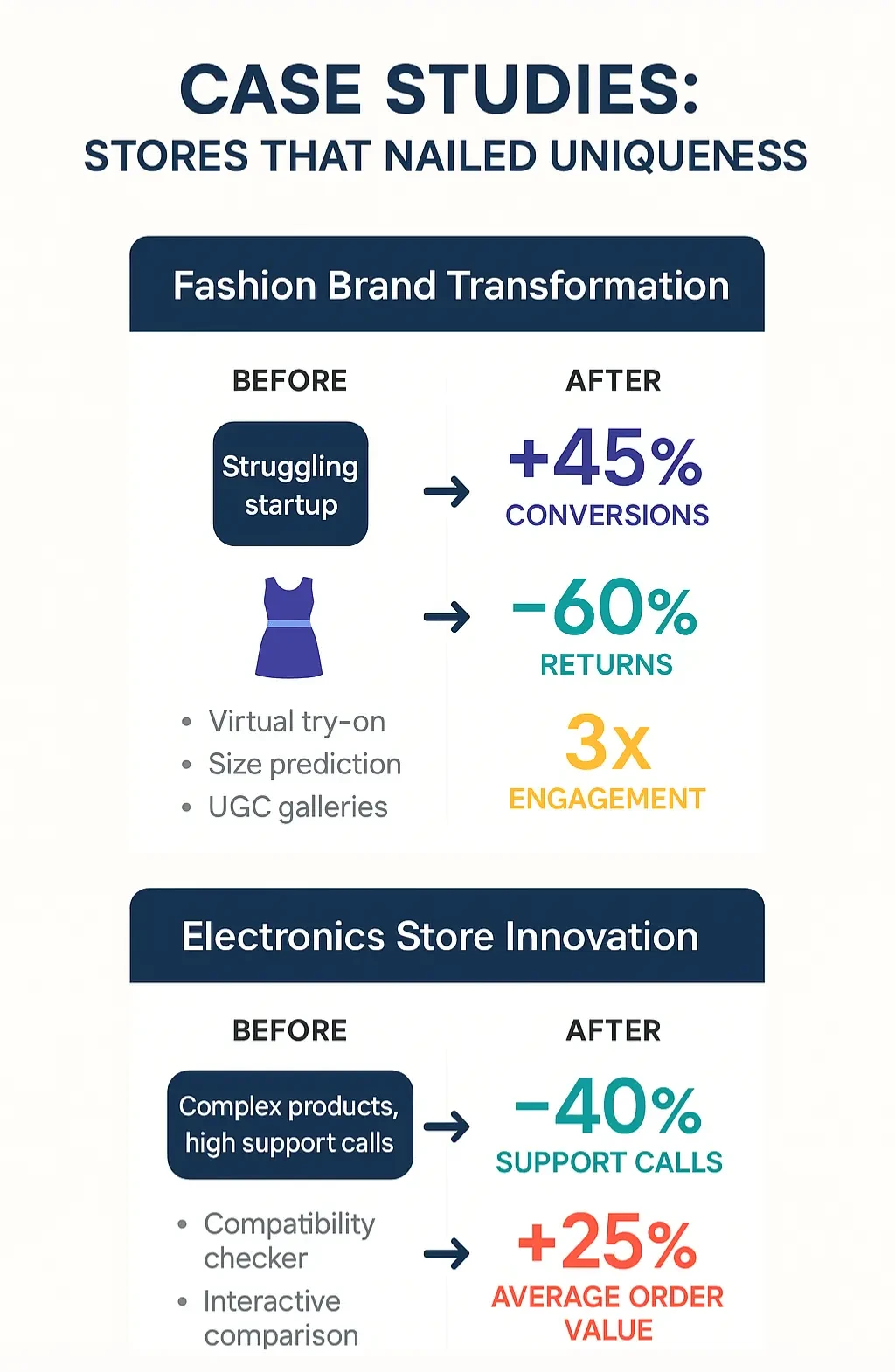
An electronics retailer built compatibility checkers. Interactive product comparisons. Technical specification filters.
Complex products became easy to understand. Customer support calls dropped 40%. Average order value increased 25%.
Technical buyers appreciated the detailed, accurate information.
Home Decor Success Story
A home decor brand created room visualization tools. Color matching features. Mood board builders.
Customers could see products in context. Confidence increased. Premium pricing became acceptable.
The result was 80% higher average order values and 35% better customer retention.
Getting Started With Your Unique Theme
Ready to make your store unique? Start with strategy, not features.
Audit Your Current Performance
Where do you lose customers now? Analytics reveal the truth.
High bounce rates suggest relevance problems. Cart abandonment indicates friction. Low time on site shows engagement issues.
Fix the biggest problems first. Then add unique features that prevent future problems.
Identify Your Unique Value Proposition
What makes you different from competitors? This drives feature decisions.
Price leader? Focus on savings displays and bulk discounts. Quality focus? Highlight materials and craftsmanship.
Unique features should amplify your existing strengths, not create new confusion.
Plan Your Feature Roadmap
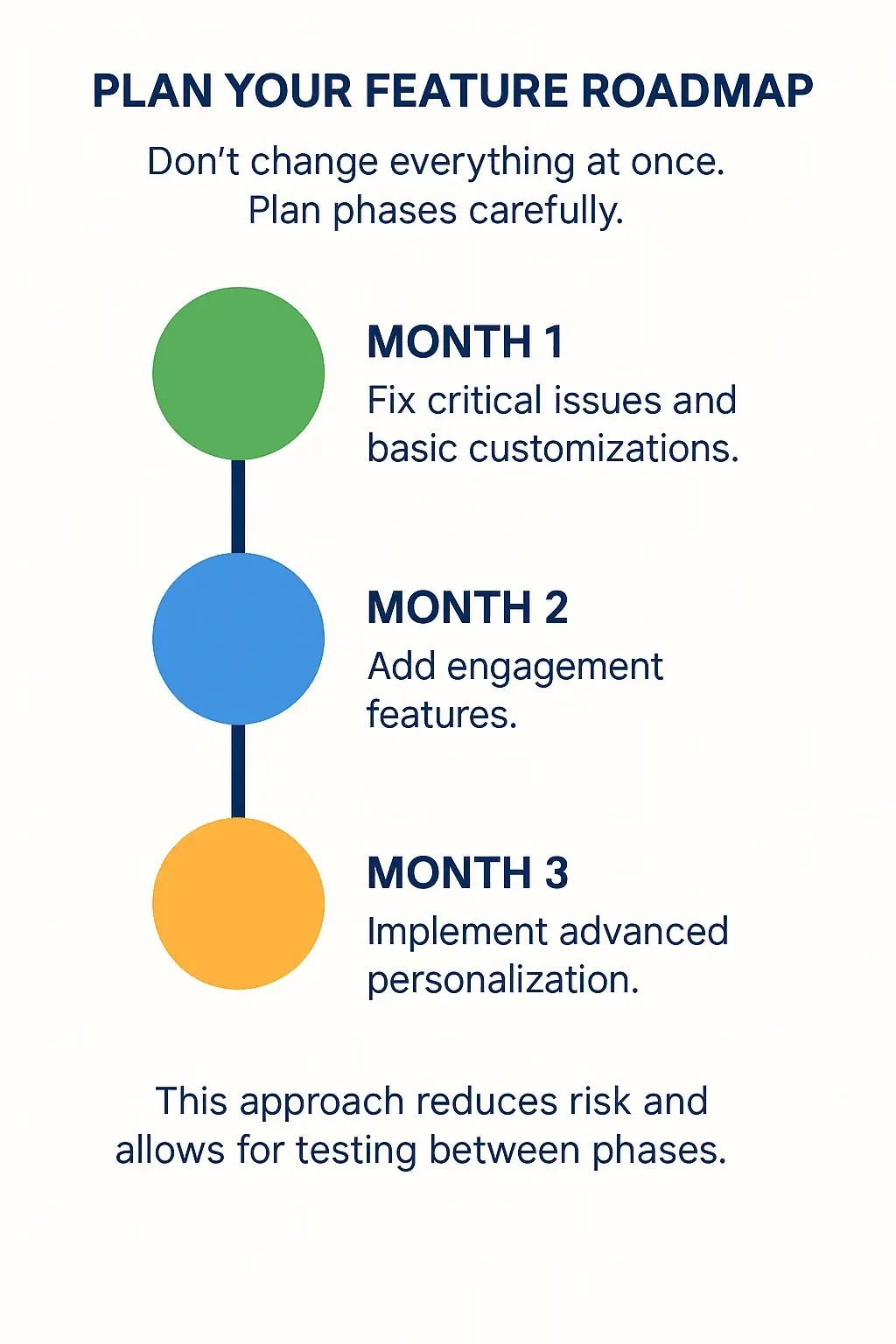
Don't change everything at once. Plan phases carefully.
Month 1: Fix critical issues and basic customizations. Month 2: Add engagement features. Month 3: Implement advanced personalization.
This approach reduces risk and allows for testing between phases.
Working with Theme Development Professionals
Should you DIY or hire experts? Both paths work for different situations.
When to Hire Professionals
Complex requirements need expert implementation. Custom theme development delivers results faster than trial-and-error approaches.
Technical integrations require coding knowledge. Performance optimization needs experience. Cross-browser testing takes time.
Professional development costs more upfront but often costs less overall when you factor in time and mistakes.
What to Look for in Developers
Not all developers are equal. Look for e-commerce-specific experience.
Check portfolios for similar projects. Ask about post-launch support. Verify they understand conversion optimization principles.
The cheapest option usually isn't the best value. Quality development pays for itself through better results.
Managing Development Projects
Clear communication prevents problems. Define requirements precisely. Set realistic timelines.
Regular check-ins keep projects on track. Testing throughout development catches issues early.
Good developers welcome feedback and questions. Great ones suggest improvements you hadn't considered.
Troubleshooting Common Theme Issues
Even great themes face problems. Quick resolution keeps customers happy.
Performance Problems
Slow loading kills conversions. Identify bottlenecks fast.
Check image sizes first. Most performance issues start there. Optimize without losing quality.
Remove unused apps and code. Every element adds loading time.
For detailed troubleshooting steps, check our guide on common Shopify theme issues and fixes.
Mobile Display Issues
Desktop perfection doesn't guarantee mobile success. Test religiously on real devices.
Pay attention to touch targets. Buttons need adequate spacing. Text needs readable sizes.
Horizontal scrolling is usually a sign of responsive design problems.
Browser Compatibility
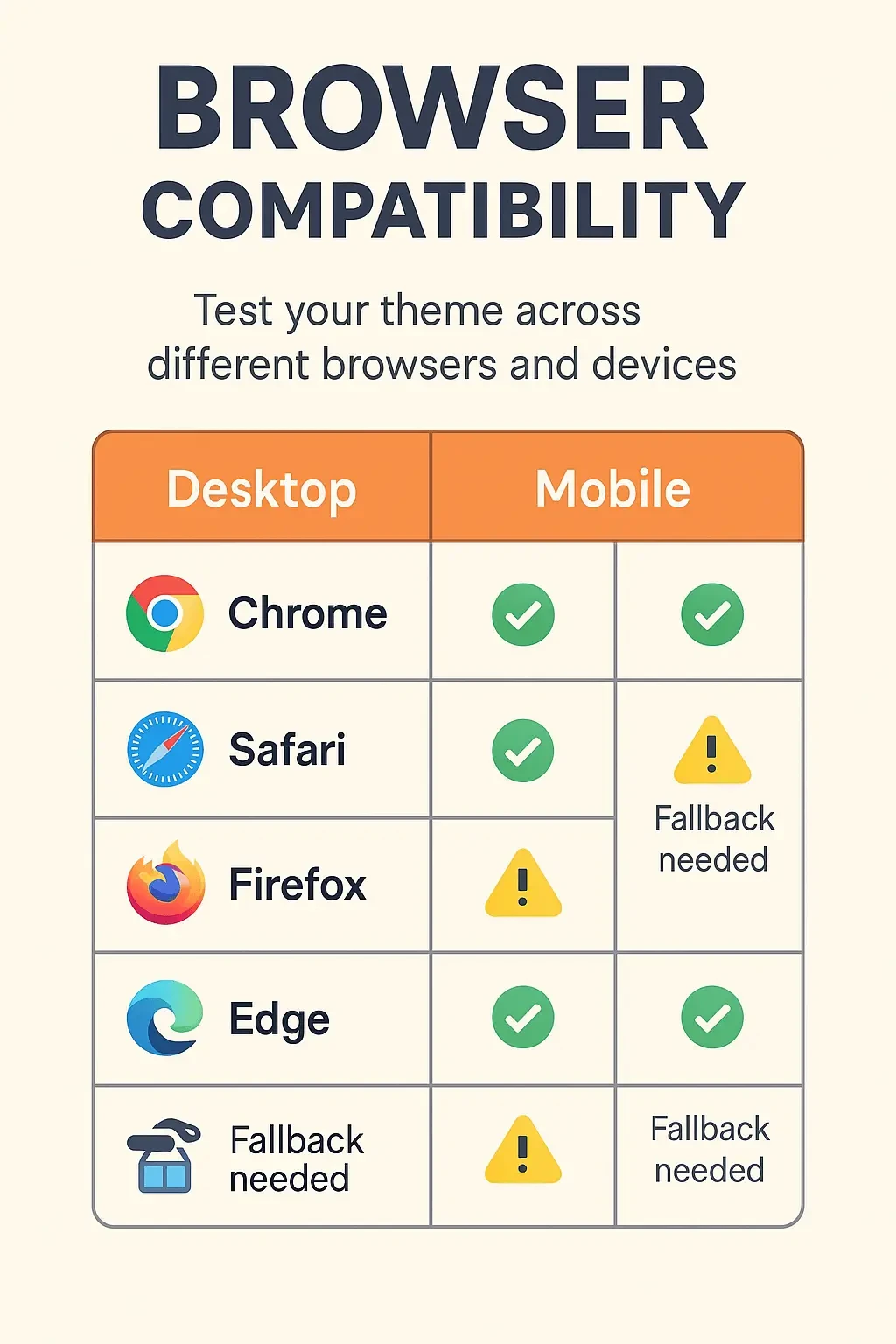
Your customers use different browsers. Your theme should work everywhere.
Test in Chrome, Safari, Firefox, and Edge minimum. Check both desktop and mobile versions.
Some features work differently across browsers. Plan fallback options.
Staying Ahead of Theme Trends
E-commerce evolves fast. Stay current without chasing every fad.
Industry Trend Analysis
Follow e-commerce publications. Join developer communities. Attend virtual conferences.
But filter everything through your customer lens. Trends that don't serve your audience don't matter.
Our analysis of future Shopify theme trends shows what's actually gaining traction versus what's just hype.
Competitive Research
Watch what successful competitors do. But don't copy blindly.
Understand why they make certain choices. Test similar approaches for your audience.
Sometimes the best differentiation comes from zigging when others zag.
Customer Feedback Integration
Your customers tell you what they need. Listen actively.
Support tickets reveal pain points. Review comments suggest improvements. Exit surveys explain abandonment.
Build features customers actually want, not features you think sound cool.
Maximizing ROI from Theme Investments
Theme customization should pay for itself. Track returns carefully.
Cost-Benefit Analysis
Calculate current conversion rates and average order values. Project improvements from planned changes.
Most theme improvements show ROI within 6 months if focused on real customer needs.
Remember to factor in ongoing maintenance costs and potential traffic growth.
Revenue Impact Tracking

Set up proper analytics before making changes. You need baseline data for comparison.
Track not just conversion rates but also average order value, customer lifetime value, and repeat purchase rates.
Some theme improvements affect different metrics in different ways.
Long-term Value Considerations
Great themes keep delivering value long after launch. They adapt to business growth. They handle traffic increases gracefully.
Factor in the cost of NOT having unique features. Lost customers cost more than theme development.
Platform Comparisons: Why Shopify Wins
Shopify isn't the only ecommerce platform. But it offers unique advantages for customization.
Shopify vs Other Platforms
Our detailed comparison of Shopify versus other ecommerce platforms shows why Shopify leads for theme flexibility.
Liquid templating language offers power without complexity. App ecosystem extends functionality easily.
Hosting is handled automatically. Security updates happen seamlessly.
Customization Limitations
No platform is perfect. Shopify has some limitations, too.
Checkout customization is restricted. Server-side processing is limited. Database access is controlled.
But for 95% of stores, these limitations don't matter. The benefits far outweigh the restrictions.
Migration Considerations
Switching platforms is painful. Choose wisely from the start.
Shopify's ecosystem makes growth easier. As your store scales, more tools become available.
Other platforms might seem cheaper initially. But the total cost of ownership often favors Shopify long-term.
Theme Rebranding Strategies
Sometimes stores need complete visual overhauls. Brand evolution requires theme evolution too.
When to Rebrand Your Theme
Market positioning changes. Target audiences shift. Competition increases.
Theme rebranding projects require careful planning. Existing customers need smooth transitions.
Don't rebrand just because you're bored. Rebrand when business strategy demands it.
Minimizing Disruption
Gradual changes work better than sudden overhauls. Test new elements before full rollout.
Communicate changes to existing customers. Explain the benefits clearly.
Keep core navigation and checkout processes familiar during transitions.
Measuring Rebrand Success

Set clear goals before starting. Brand recognition, conversion rates, customer feedback.
Some improvements take time to show up in the data. Be patient, but track everything.
Customer surveys reveal perception changes that analytics might miss.
Advanced Conversion Optimization
Theme features should drive conversions. Optimize ruthlessly for business results.
Psychology-Based Design
Understand customer psychology. Design elements trigger specific behaviors.
Scarcity creates urgency. Social proof builds confidence. Clear value propositions motivate action.
Our experience with conversion-focused theme design shows which psychological triggers work best for different industries.
Heat Map Analysis
See where customers actually click and scroll. Heat maps reveal behavior patterns.
Popular areas need optimization for conversions. Ignored areas might need repositioning or removal.
This data guides layout decisions better than guesswork.
Conversion Funnel Optimization
Map customer journeys through your site. Identify drop-off points. Optimize each step.
Product page to cart. Cart to checkout. Checkout to completion.
Small improvements at each stage compound into significant overall gains.
Building High-Converting Custom Themes
Custom themes can deliver exceptional results when built with conversion in mind.
Conversion-Focused Architecture
Every element should serve a purpose. Remove anything that doesn't drive business goals.
Building high-converting Shopify stores requires balancing aesthetics with functionality.
Beautiful designs that don't convert are expensive art projects, not business assets.
User Experience Optimization
Smooth experiences lead to more sales. Remove friction wherever possible.
Fast loading times, intuitive navigation, clear calls-to-action. These basics matter more than flashy features.
Test with real users. Watch them interact with your site. Their behavior reveals improvement opportunities.
Testing and Iteration

Launch is just the beginning. Continuous optimization drives long-term success.
A/B test different layouts. Try various copy approaches. Experiment with color schemes.
Small wins accumulate into major improvements over time.
Conclusion: Your Unique Theme Journey Starts Now
Generic Shopify stores are invisible. Unique stores are unforgettable.
Your theme is your silent salesperson. It works 24/7. It never takes sick days. It represents your brand to every visitor.
The features we've discussed aren't just nice-to-haves. They're competitive necessities in today's market.
Start with your biggest pain points. Add features that solve real problems. Test everything. Measure results.
Remember: uniqueness for its own sake is worthless. Uniqueness that serves customers is priceless.
Your store can stand out. Your theme can drive results. Your brand can win.
But only if you take action.
Ready to transform your Shopify store with unique theme features that actually convert? Our team specializes in custom Shopify theme development that drives real business results.
Let's build something amazing together. Your customers are waiting.
FAQs
Why are generic themes bad for sales?
Generic themes make your store look like thousands of others. When everything looks the same, customers compare only on price. That kills your margins. Unique theme features create differentiation, trust, and emotional connection that make people choose you over competitors.
What makes Shopify theme features truly unique?
Unique features solve real customer problems. For example, interactive elements keep visitors engaged, personalization makes people feel recognized, and authentic social proof builds instant trust. Clutter or gimmicks do the opposite.
What does the flowchart for geographic personalization show?
It illustrates how stores can adapt experiences based on visitor location. For example:
- Detect visitor country → Show prices in local currency
- Detect region → Highlight regional shipping options
- Detect city → Use local phrases (“Fast delivery across Toronto”)
This makes experiences feel personal without complex tech.
What is exclusive content integration?
It’s about going beyond a simple blog. Think a full content hub with buyer guides, tutorials, and member-only resources. These add authority, build loyalty, and create a reason for customers to return even when they’re not shopping.
How do interactive size guides reduce returns?
They let shoppers click, compare, or see real fit photos instead of guessing sizes. This increases confidence, lowers return rates, and boosts sales. Customers buy more when they’re sure about fit.
What are Progressive Web App (PWA) features for Shopify?
PWAs give your store app-like powers: offline browsing, push notifications, and lightning-fast load times. They feel like a native app without requiring downloads. Mobile conversions often jump 20–30% when PWA features are added.
What is a “Revenue Impact Tracking ROI Worksheet”?
It’s a worksheet that calculates the financial return of theme customizations. It includes fields like:
- Conversion rate
- Average order value
- Customer lifetime value
- Theme cost
- Revenue lift
By plugging in numbers, you see whether customizations pay for themselves (most do in 3–6 months).
